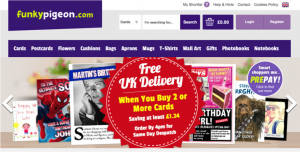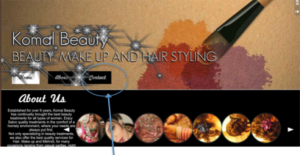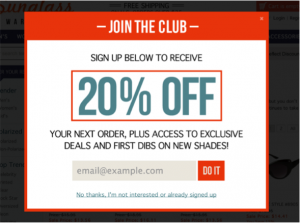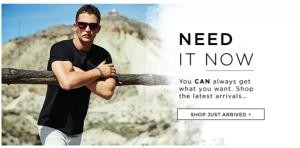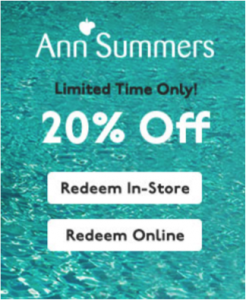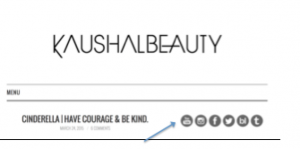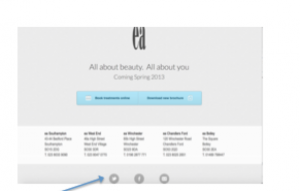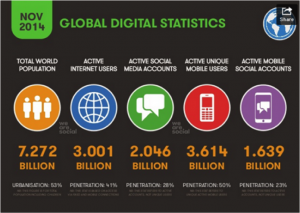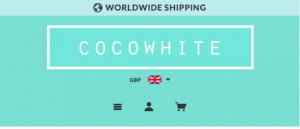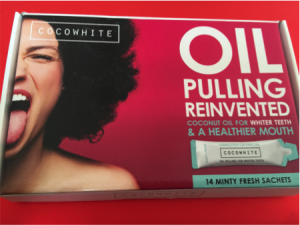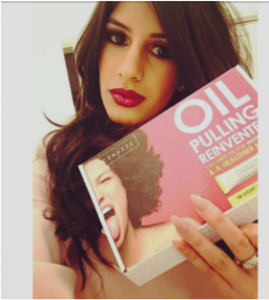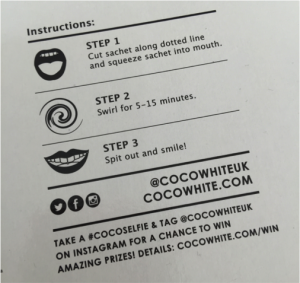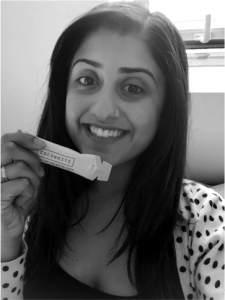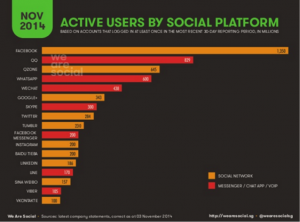Last time you were reading my blog, we learnt three vital lessons regarding the creation and appearance of effective and ineffective CTA’s.
- LESSON 1: USE BUTTONS
- LESSON 2: BE EXCITING, IMPERATIVE AND COMMANDING
- LESSON 3: LESSON LEARNT: USE CONTRASTING COLOURS
According to Wolf (2013), one of the most important steps in improving the conversion on a sites landing page, is designing a successful call to action. In conjunction with the characteristics discussed in part 1, the position of the call to action is also very important.
Part 2 now aims to analyse the most effective and ineffective positions to place your CTA’s, again followed by some Do’s and Don’ts. In this blog post I will consider the following areas for where to place the CTA on a website landing page:
- Above the fold
- Below the fold using the concept AIDA
Above the fold
Ecommerce pundits have long preached the importance of keeping the CTA above the fold (McEnroe 2014). Per McEnroe, the rational behind placing the CTA above the fold is ‘clear enough’. Not only will visitors of the website will immediately notice the CTA and click on it if it is at the top of the landing page, but theoretically there is also less chance of visitors either missing the CTA or existing the page before reaching the CTA.
Here is an example of a CTA that is placed above the fold…
Though one may suggest that theoretically it is advised to place a CTA above the fold, in today’s revolutionising digital age where behavior has evolved, a change may be in need. Per Gardener (2013), since the evolution of Facebook and MySpace ‘scrolling has become second nature’. Individuals are familiar with the notion of scrolling to the bottom of a page and to just ‘put’ in simple terms a CTA before they know any information, would be considered as running before you can walk.
Irrespective of the advancements in the digital age, if you wish to place your CTA above the fold, Gardner’s ‘5 – point punch’ will defiantly help you to make it as effective as possible.
Gardner notes that success behind having a CTA above the fold stems from 5 simple steps.
- A powerful and descriptive headline
- A Complimentary supporting sub header
- A brief benefit statement
- An urgency or special offer statement
- A CTA that describes exactly what you’ll get
Essentially, if you follow these 5 simple steps your CTA above the fold will not be any less successful that it being placed anywhere else on the landing page.
Below the fold
According to a study by Ciotti (2013), less content above the fold can actually encourage individuals to scroll to the bottom of the page. In relation to these findings, it would therefore be suggested that to increase the conversion of a landing page and encourage more content to be read, the CTA would be more beneficial if placed below the fold.
Essentially, placing the CTA lower down the page leaves the reader with more time to read and digest the content on the page before making their decision. Observed by Burstien (2012), placing a CTA below the fold, near the bottom of a page had a 20% better conversion rate as opposed to placing it above the fold. Furthermore, discovered by Goldenberg (2012), simply moving the CTA below the fold lifted the conversion rate by 304%.

Conceptually, AIDA is based upon the notion that a visitor progresses through a series of linear steps before they make any decision to take action. So what does AIDA stand for? AIDA stands for Attention, Interest, Desire and Action.
- A: Attention- Attention of the visitors can be captured through a eye-catching and punchy headline.
- I: Interest- Interests of the visitors can be captured through many forms of content and media. This can range from videos to pictures and games.
- D: Desire –Naturally, visitors will only visit your website and continue to browse if the content appeals to them. Therefore, desire is created though the use of relative and relatable content and features on the website.
- A: Action – Finally, a strong call to action completes the process of steps. When all of the above three elements (AID) are satisfied, the call to action acts as the final straw in the process of persuasion. It is here at this point where all the characteristics that were evaluated in part 1 come into action.
Ultimately, it is all about the enticement. Logically, placing the CTA below the fold provides the viewer the time to digest all the relative information, enticing him even more to click on the CTA. However, placing the CTA above the fold immediately grabs the attention of the viewer and prevents users from missing the CTA. Is it therefore YOUR decision on there you choose to place the CTA. There is truly no right or wrong answer. It’s your choice!
Heres a short video that comments what a CTA, what its benefits are and where a business should place their CTA on their website…
So are you ready to create your fantastic and perfect CTA? You now know where to position your CTA and moreover how to create the perfect appealing CTA button so…. DO IT!
References:
Burstein. D, (2012), 5 Common call-to-action Errors, Retrieved April 24, 2015, from, http://www.marketingexperiments.com/blog/marketing-insights/call-to-action-errors.html
Ciotti. G, (2013), 5 Landing Page Conversion Killers, Retrieved April 24, 2015, from, http://unbounce.com/landing-pages/conversion-killers/
Gardner. O, (2013), Where’s the best place to put your CTA? [Case Study], Retrieved April 24, 2015, from, http://unbounce.com/conversion-rate-optimization/landing-page-cta-placement/
Goldenberg. G, (2012), How a landing page with the Call-to-Action below the fold outperformed an Above-the-fold variant by 304%, Retrieved April 24, 2015, http://contentverve.com/how-moving-the-call-to-action-below-the-fold-generated-a-304-lift/
Hubspot Academy, (2014), Call-to-Action Best Practices, Retrieved April 24, 2015, from, http://knowledge.hubspot.com/cta-user-guide/call-to-action-best-practices
Kissmetrics, Why “the fold” is a myth – And where to actually put your calls to action, Retrieved April 24, 2015, from, https://blog.kissmetrics.com/why-the-fold-is-a-myth/
McEnroe. G, (2014), Above or Below the fold: Where to place your CTA?, Retrieved April 24, 2015, from, http://www.veinteractive.com/blog/20140721/above-or-below-fold-where-place-your-cta
Moth. D, Email marketing CTA design: five good vs. six bad examples, Retrieved April 24, 2015, from, https://econsultancy.com/blog/64997-email-marketing-cta-design-five-good-vs-six-bad-examples/
Shewan. D, (2014), 11 Kick – Ass Call to Action Examples, and why they work, Retrieved April 24, 2015, from, http://www.wordstream.com/blog/ws/2014/10/20/call-to-action-examples,
Smith. J, (2014), 6 Characteristics of High Converting CTA Buttons, Retrieved April 24, 2015, from, http://blog.crazyegg.com/2014/10/16/high-converting-cta-buttons/
Waldron. J, Above or Below the fold what should go where?,Retrieved April 24, 2015, from, http://www.markitwrite.com/fold-go/




